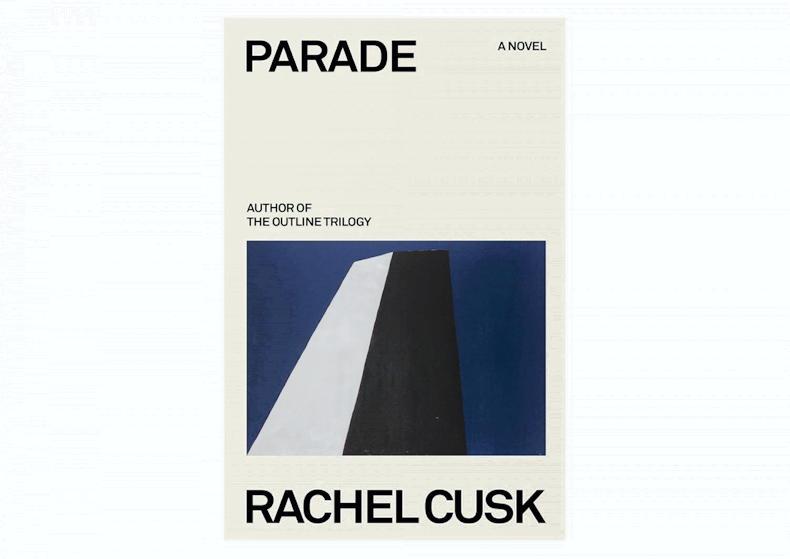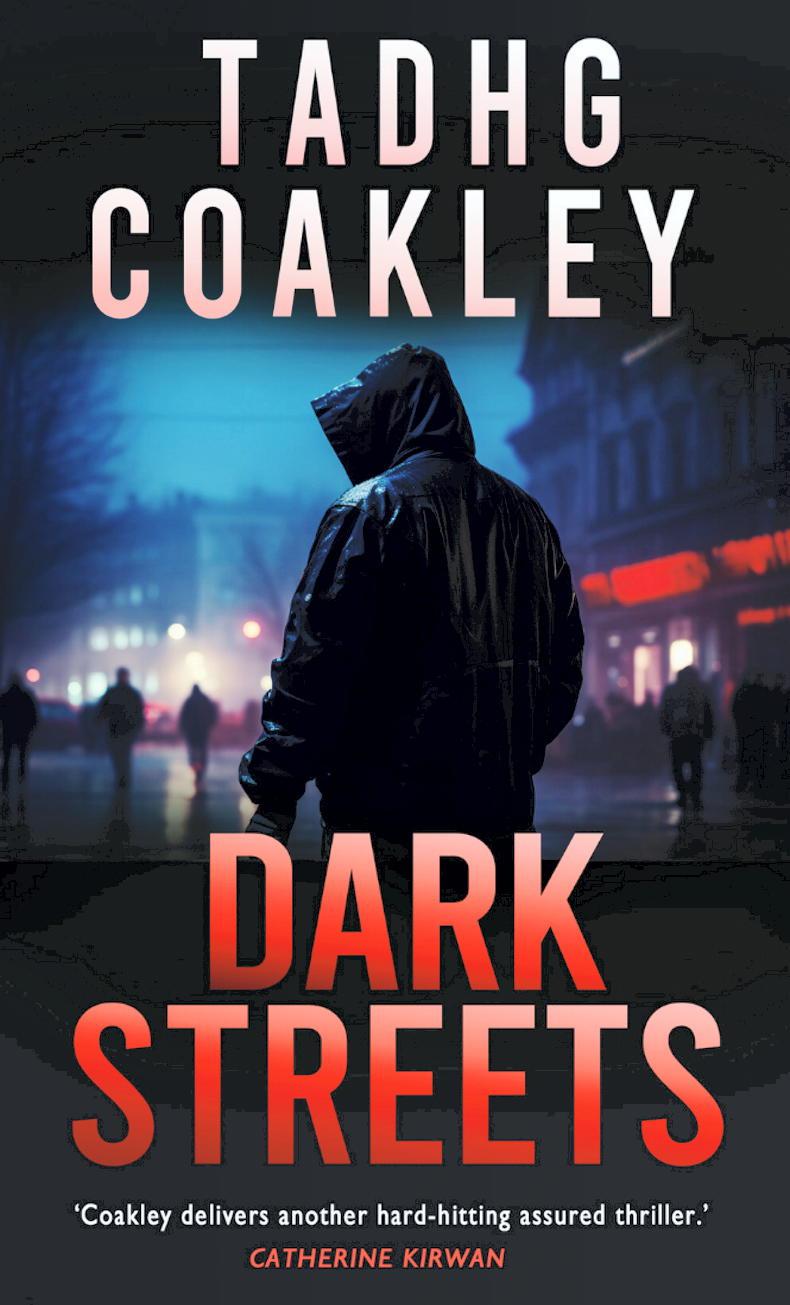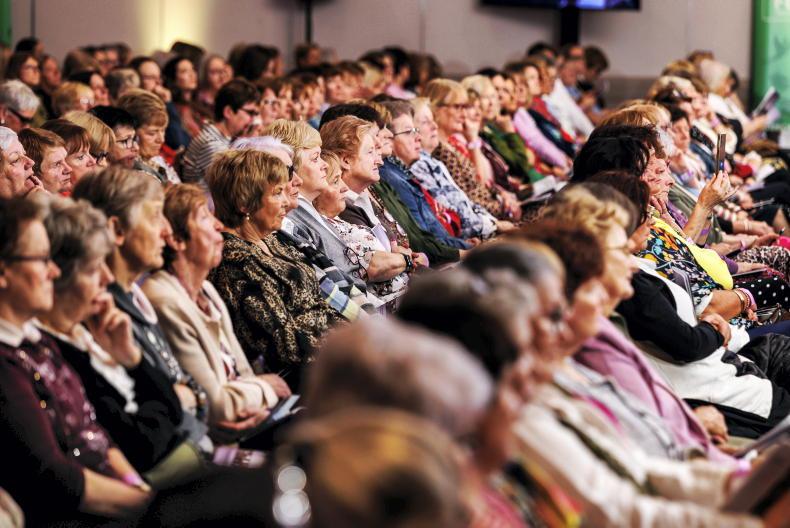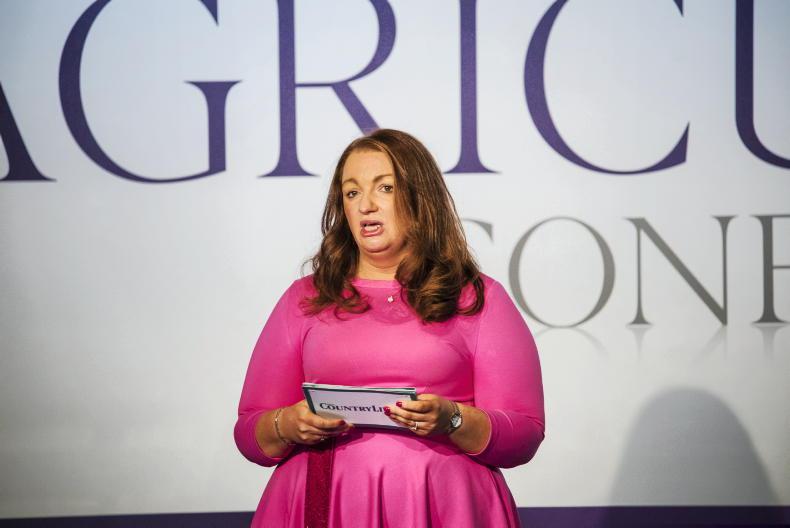Book of the Month
Parade by Rachel Cusk is published by Faber, €21.50.
As I sat to write about Parade, the latest work by Rachel Cusk, it dawned on me that I had chosen yet another challenging book to review.
While the other books featured this month, Conor Niland’s insight into the world of tennis and Tadhg Coakley’s latest gritty crime novel, will appeal to lovers of those genres, Parade will likely divide opinions. Nonetheless, it is a masterpiece.
A short book, comprising just four chapters, it is not a quick read, and while it is a brilliant work, it is also at times very unsettling.

Book of the Month, Parade by Rachel Cusk, is published by Faber, €21.50.
It has often been said that the Canadian-born, now French-domiciled, Cusk is an author that British reviewers love to hate. She is introspective, pushes boundaries, is a non-conformist, but her work will live on, unlike those of many popular writers.
Written in the third person, but with elements of first-person narration, Parade’s four chapters focus on the lives of artists, and in each they are simply known as G.
The book opens with The Stuntman, the story of a man who “because he could find no other way to make sense of his time and place in history, began to paint upside down."
The female character in the following chapter, The Midwife, responds to her parents’ neglect of her, and their disapproval, by painting pieces that are “horrible, pornographical and gleeful," and marries a man who also expressed disapproval of her work.
Chapter three is The Diver, and centres on a discussion about a major exhibition by G that has been cancelled after a man jumped to his death. A group of art professionals and academics delve into the subject.
The book closes with The Spy, a former writer turned filmmaker, working under a pseudonym. He finds that cinema allows him to “see without being seen: for there is no better definition of the artist’s vocation."
Cusk certainly does not conform when it comes to subject matter, and she most definitely shatters widely-held conventions of storytelling.
Whatever about shocking readers, Rachel Cusk wants to show the reader the world as it really is, and she does not put any gloss on it.
If these stories are uncomfortable, they are all the better for being so.
Reality is often painful, but sticking with Parade to the end will, in this reviewer’s opinion at least, be ultimately satisfying.
Leo's recommended reading

The Murder of Roger Ackroyd by Agatha Christie.
The Classic
The Murder of Roger Ackroyd by Agatha Christie, €12
Agatha Christie is said to have more books in print than any other writer in history.
She discovered her gift for writing mystery fiction while working as a nurse during World War I, and over the course of some six decades she penned about 80 books, almost half of which featured the Belgian detective Hercule Poirot.
It was not until Poirot appeared in print for the third time, in the bestselling The Murder of Roger Ackroyd, that he and the author both became household names. This was 1926, and Poirot was killed off in the novel Curtain in 1975, a year before Christie’s own death.
His popularity was such that he was the first fictional character to have a front-page obituary in the New York Times.
In this book, Poirot comes out of retirement in the English village of King’s Abbot to solve the murder of the well-off Ackroyd, found dead in his locked study.
There is no shortage of suspects, but the book comes to a stunning conclusion with a most unusual plot twist, one that shocked readers of this genre at the time.

The Racket by Conor Niland.
Sport
The Racket: On Tour With Tennis’s Golden Generation and the Other 99%, by Conor Niland, Penguin, €17.99
The brutality of being a professional tennis player, outside of the elite, is so well told by Conor Niland in the aptly titled The Racket: On Tour With Tennis’s Golden Generation and the Other 99%.
The title may be unwieldly, but this is a book that will have you look at the major tournaments in a new light. The stars of the game are indeed household names, and earn what for many are obscene amounts of money, but the layers of players beneath that group are filled with those who aspire to be a champion, but mostly fail that critical test.
Conor Niland remains one of the very best players ever to emerge from Ireland.
With hindsight, his talent was evident when he beat Roger Federer at the age of 12. A Wimbledon junior champion in 1998, Federer later won 103 singles titles on the ATP Tour, including 20 major men’s singles titles, and on court earned more than $130 million.
This is a searingly honest account of the real world of tennis.

Dark Streets by Tadgh Coakley.
Irish crime
Dark Streets by Tadhg Coakley, Mercier Press, €16.99
From Mallow in Co Cork, Tadhg Coakley is one of Ireland’s best sports writers, and last year his fourth book, The Game: A Journey into the Heart of Sport, was shortlisted as sports book of the year.
In recent years, the Cork city resident has also become a crime writer, and to great acclaim. His first Irish Noir book Whatever It Takes was published in 2020, and introduced us to the character of Detective Garda Tim Collins, a former intercounty hurler.
Three years later, Collins was back in Before He Kills Again, this time tasked to solve the murder of a young woman, and working with a new partner.
Readers have not had to wait so long for the next book in the series, Dark Streets, and the latest volume will have you sitting on the edge of your seat, yet wanting to keep turning the page to find out what happens next.
Familiar settings for the three books, in Cork and Kerry, help to make these books even more real. Buckley is becoming a master of crime.
Book of the Month
Parade by Rachel Cusk is published by Faber, €21.50.
As I sat to write about Parade, the latest work by Rachel Cusk, it dawned on me that I had chosen yet another challenging book to review.
While the other books featured this month, Conor Niland’s insight into the world of tennis and Tadhg Coakley’s latest gritty crime novel, will appeal to lovers of those genres, Parade will likely divide opinions. Nonetheless, it is a masterpiece.
A short book, comprising just four chapters, it is not a quick read, and while it is a brilliant work, it is also at times very unsettling.

Book of the Month, Parade by Rachel Cusk, is published by Faber, €21.50.
It has often been said that the Canadian-born, now French-domiciled, Cusk is an author that British reviewers love to hate. She is introspective, pushes boundaries, is a non-conformist, but her work will live on, unlike those of many popular writers.
Written in the third person, but with elements of first-person narration, Parade’s four chapters focus on the lives of artists, and in each they are simply known as G.
The book opens with The Stuntman, the story of a man who “because he could find no other way to make sense of his time and place in history, began to paint upside down."
The female character in the following chapter, The Midwife, responds to her parents’ neglect of her, and their disapproval, by painting pieces that are “horrible, pornographical and gleeful," and marries a man who also expressed disapproval of her work.
Chapter three is The Diver, and centres on a discussion about a major exhibition by G that has been cancelled after a man jumped to his death. A group of art professionals and academics delve into the subject.
The book closes with The Spy, a former writer turned filmmaker, working under a pseudonym. He finds that cinema allows him to “see without being seen: for there is no better definition of the artist’s vocation."
Cusk certainly does not conform when it comes to subject matter, and she most definitely shatters widely-held conventions of storytelling.
Whatever about shocking readers, Rachel Cusk wants to show the reader the world as it really is, and she does not put any gloss on it.
If these stories are uncomfortable, they are all the better for being so.
Reality is often painful, but sticking with Parade to the end will, in this reviewer’s opinion at least, be ultimately satisfying.
Leo's recommended reading

The Murder of Roger Ackroyd by Agatha Christie.
The Classic
The Murder of Roger Ackroyd by Agatha Christie, €12
Agatha Christie is said to have more books in print than any other writer in history.
She discovered her gift for writing mystery fiction while working as a nurse during World War I, and over the course of some six decades she penned about 80 books, almost half of which featured the Belgian detective Hercule Poirot.
It was not until Poirot appeared in print for the third time, in the bestselling The Murder of Roger Ackroyd, that he and the author both became household names. This was 1926, and Poirot was killed off in the novel Curtain in 1975, a year before Christie’s own death.
His popularity was such that he was the first fictional character to have a front-page obituary in the New York Times.
In this book, Poirot comes out of retirement in the English village of King’s Abbot to solve the murder of the well-off Ackroyd, found dead in his locked study.
There is no shortage of suspects, but the book comes to a stunning conclusion with a most unusual plot twist, one that shocked readers of this genre at the time.

The Racket by Conor Niland.
Sport
The Racket: On Tour With Tennis’s Golden Generation and the Other 99%, by Conor Niland, Penguin, €17.99
The brutality of being a professional tennis player, outside of the elite, is so well told by Conor Niland in the aptly titled The Racket: On Tour With Tennis’s Golden Generation and the Other 99%.
The title may be unwieldly, but this is a book that will have you look at the major tournaments in a new light. The stars of the game are indeed household names, and earn what for many are obscene amounts of money, but the layers of players beneath that group are filled with those who aspire to be a champion, but mostly fail that critical test.
Conor Niland remains one of the very best players ever to emerge from Ireland.
With hindsight, his talent was evident when he beat Roger Federer at the age of 12. A Wimbledon junior champion in 1998, Federer later won 103 singles titles on the ATP Tour, including 20 major men’s singles titles, and on court earned more than $130 million.
This is a searingly honest account of the real world of tennis.

Dark Streets by Tadgh Coakley.
Irish crime
Dark Streets by Tadhg Coakley, Mercier Press, €16.99
From Mallow in Co Cork, Tadhg Coakley is one of Ireland’s best sports writers, and last year his fourth book, The Game: A Journey into the Heart of Sport, was shortlisted as sports book of the year.
In recent years, the Cork city resident has also become a crime writer, and to great acclaim. His first Irish Noir book Whatever It Takes was published in 2020, and introduced us to the character of Detective Garda Tim Collins, a former intercounty hurler.
Three years later, Collins was back in Before He Kills Again, this time tasked to solve the murder of a young woman, and working with a new partner.
Readers have not had to wait so long for the next book in the series, Dark Streets, and the latest volume will have you sitting on the edge of your seat, yet wanting to keep turning the page to find out what happens next.
Familiar settings for the three books, in Cork and Kerry, help to make these books even more real. Buckley is becoming a master of crime.













SHARING OPTIONS